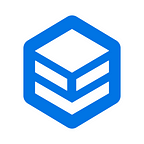Ultron?
Imagine life in 5, maybe 10 years (and not everywhere, because the future is not distributed equally). For some people the day will look like this: They wake up and are greeted by their AI concierge. IT may live on their phone, their voice device, it may have a physical form or a friendly robot or a very physically attractive human, it can even interact using only a neural link directly connected to their brain.
The AI assistant/concierge will manage, assist, navigate and take care of every possible aspect of their life. Think of Tony Stark’s Jarvis from the Iron Man or the Avengers movies. It will prepare an optimal meal plan based on the current and desired health, body weight, or specific preferences (plant-based, paleo, gluten-free, etc.). It will then order the food items from the best possible place, have them delivered and even book suitable restaurants, update the calendar and create travel plans sent to navigation apps in cars, e-bikes, etc. Meal plans will be negotiated with other AIs — that manage the lives of friends, family, and the restaurants.
All payments, data transfers, signing up / in / off will happen in the background, completely abstracted from the users. There will be no payment cards, no front-end email apps, social media app. Only APIs talking to AIs.
This will happen in business as well. AIs will find the best employees after negotiating with their AIs, checking verified education and employment record, and trusted, persistent reputation of the employees, subcontractors, etc. Supply chains and production facilities will be AI-run. Self-operated flying cars will be designed and operated by AIs. You get the picture. (On another note, many current jobs will be completely redundant and obsolete, and it’s interesting to think what new jobs will emerge. And will they?).
On the back end, to make this possible there are “only” 2 things needed: 1) an enormous amount of computation resources everywhere 2) an enormous amount of high-quality data. This can be achieved by the likes of Google, Facebook and Amazon in the US and some parts of Western Europe, working hand in hand with the NSA and by their Chinese counterparts everywhere else in the world. This vision of the future is truly disturbing: the perfect slavery-with-extra-steps system controlled by the 1% of the 1% behind a polished, slick, Disneyland-like façade pushing consumerism even further.
or Vision?
The alternative can emerge from the intersection of technologies, concepts, and trends like open-source, peer-to-peer, decentralized identity, community ownership, and blockchain leading to the creation of one or more DAO, Decentralized Autonomous Organization.
The main purposes of the DAO will be to
- maintain the open standards for decentralized identities, identity resolution, data validation, and sharing
- coordinate an open, decentralized cloud infrastructure that can be used by anyone to manage their identities and data
- develop open-source tools to govern, improve and develop further 1) and 2) above.
End users will be able to control their digital identities and data. For example, they will be able to access services and products without the need to create yet another login and password. They will just sign in using their digital wallet. Also, they will be able to choose how their data is hosted (locally, in a public cloud like AWS, in a p2p torrent-like network, or in a decentralized cloud) and who has access to it. In practical terms, it means that the switching costs go down to zero and there’s no vendor lock-in anymore. Also, inter-operability is available out of the box (imagine LinkedIn users messaging Instagram users).
Looks like this can solve the problem of having enormous amounts of high-quality data. What about compute? This is where the “self-aware blockchain” comes in. Currently, blockchain networks consist of homogenous nodes performing homogenous tasks: basically, all the nodes do the same simple task at the same time: run a piece of code (“smart contract”) and update the transaction ledger. The blockchain network has no ability to route different tasks to different nodes, divide the tasks, and has no information about the state of the nodes themselves. Now imagine a network that can autonomously manage its state based on the current and predicted demand for cloud services and based on the current and predicted state of each node in the network. The “current and predicted state” can include the technical aspect of the node, but also the regulatory, compliance, and risk management aspect, not to mention the economics of each node and the network as a whole (pricing, exchange rates, energy prices, etc.).
This would create a decentralized, self-optimizing, and self-managing cloud where each task would be processed in the most efficient way for this specific task. Cloud users would interact with a completely fluid, on-demand layer of services, completely abstracted from the physical networks, servers, and storage. On the supply side, cloud services are offered by a decentralized ecosystem of independent providers (professional data centers, cloud providers, and also individuals and companies offering their spare capacity). The self-aware blockchain will then take care of allocating workloads to the providers, take care of billing, payments, and so on.
So, when we say “self-aware blockchain”, we actually mean a decentralized autonomous organization self-aware of its network and all the nodes in terms of the technical, legal, and financial state, that uses AI and tokenized incentives to maximize the outcomes for all the participants. But “self-aware blockchain” is a bit less wordy…
The DAO that operates a decentralized, self-managed cloud infrastructure, open-source standard for self-sovereign identity, and data; that runs on a “self-aware” blockchain can be a viable infrastructure for a hopefully slightly brighter, less dystopian future.
